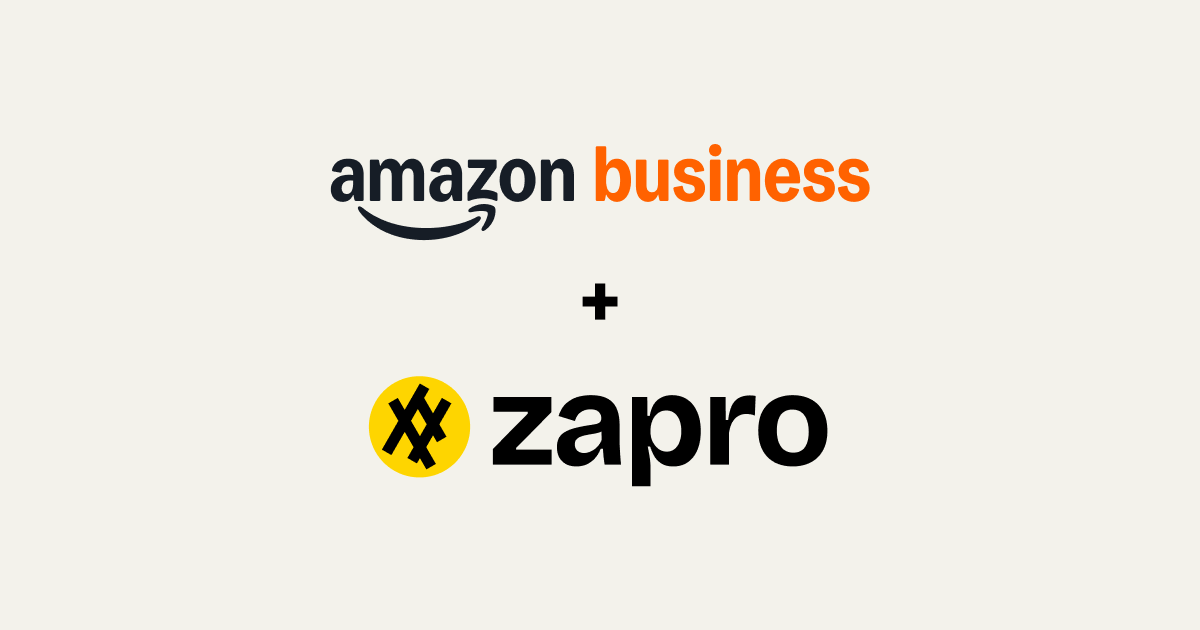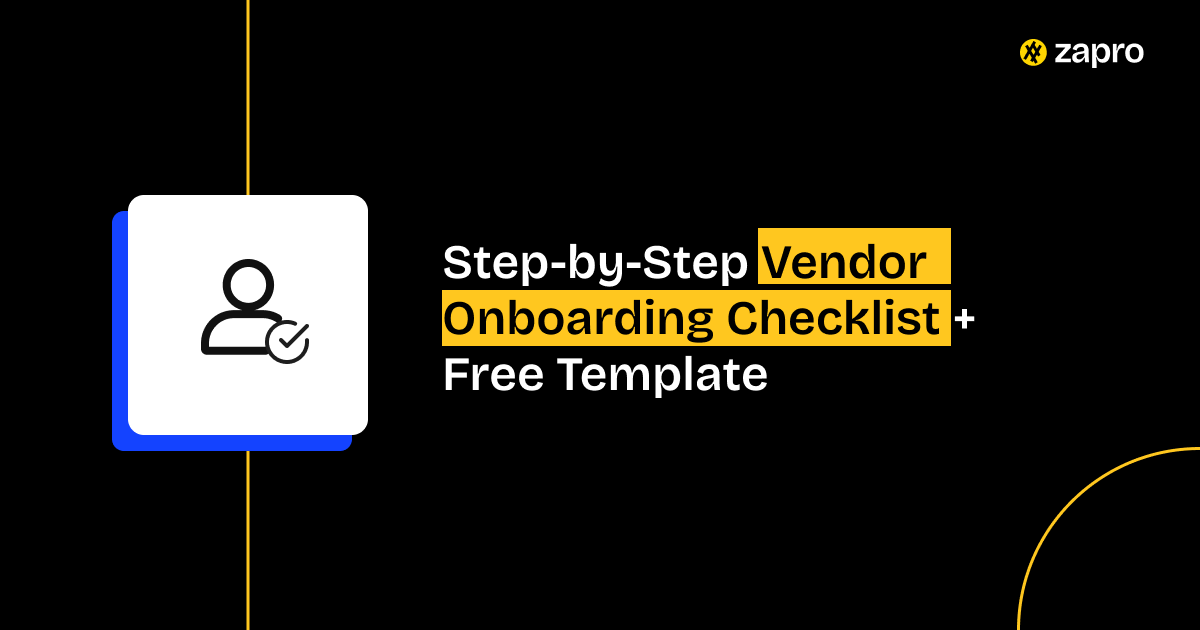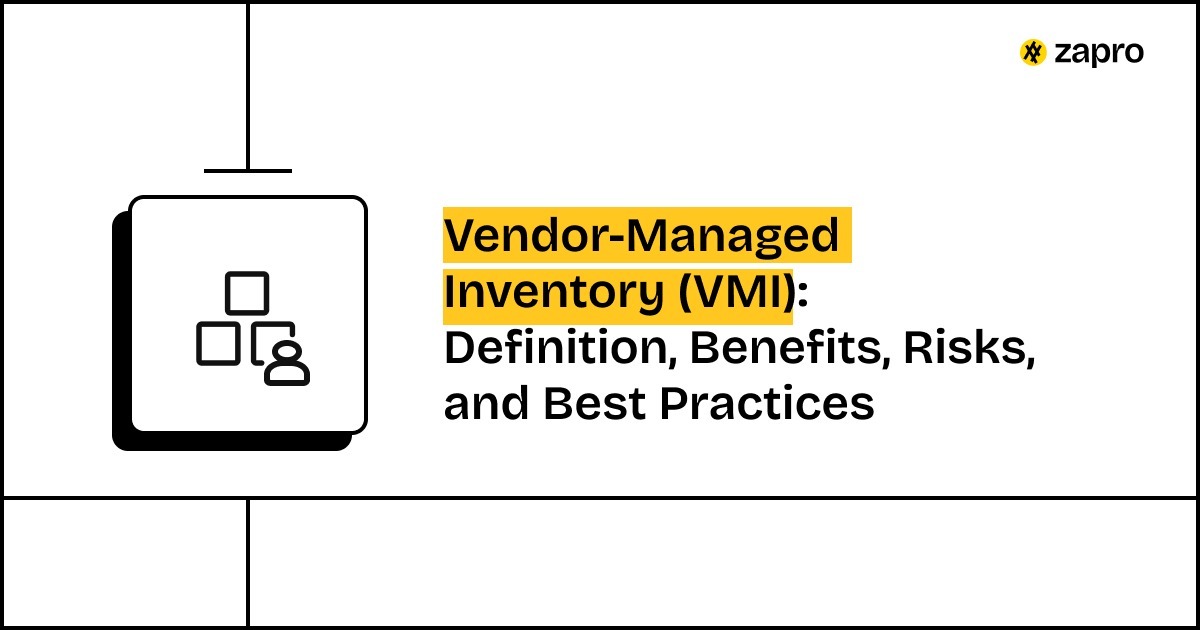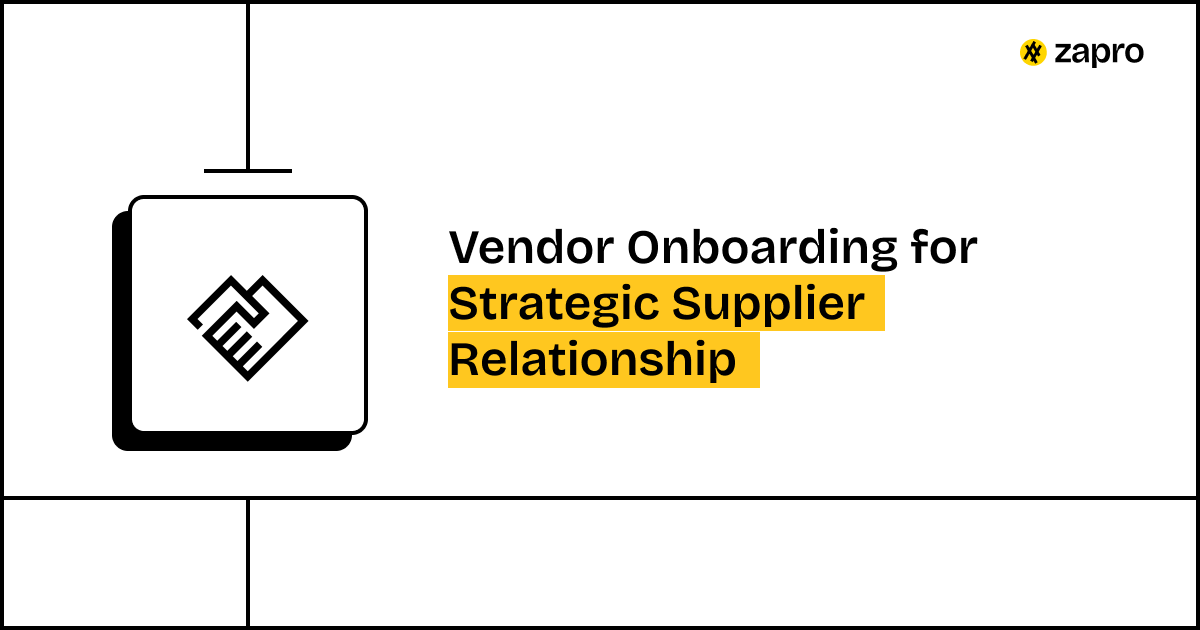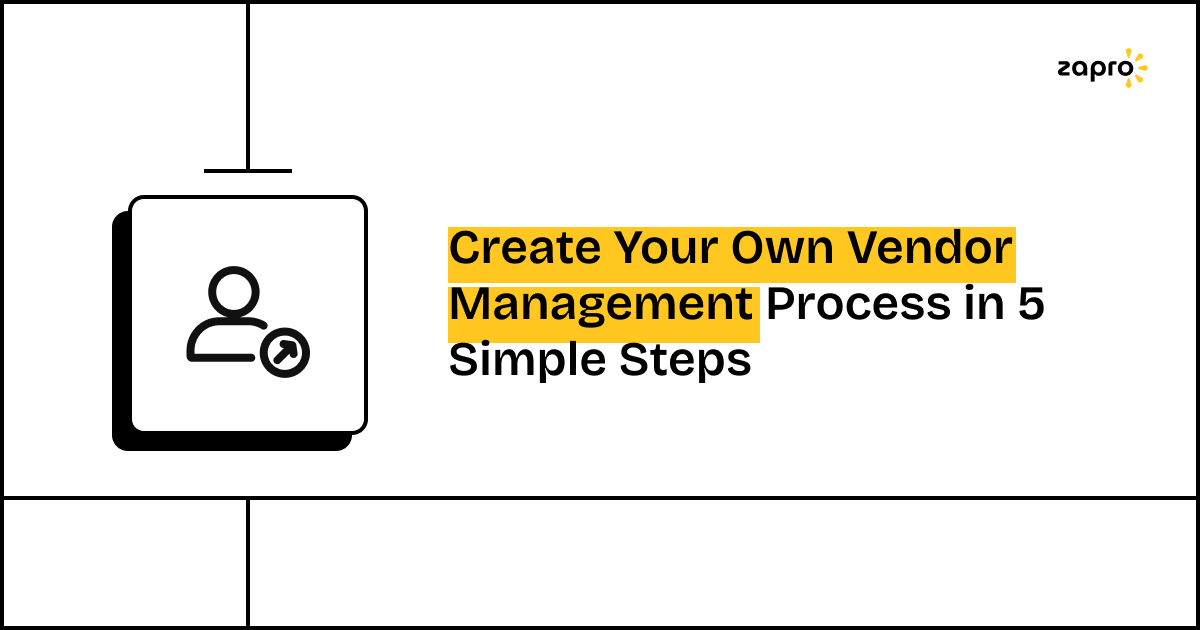Adding a new supplier to your system is an essential move. The new vendor setup process, if handled improperly, can cause slowdowns, mistakes, and put you at a considerable financial risk. On the other hand, a strong vendor onboarding checklist can guarantee compliance, shorten the time to the first purchase, and make the whole relationship vibrant right from the start.
This detailed guide provides the implementation steps for an efficient vendor integration which used to be a tiresome manual process but now can be effortlessly done by automation.
What Is Vendor Onboarding?
The process of vendor onboarding involves obtaining and validating essential vendor information which includes legal documents and tax forms and compliance certifications and banking details before starting business operations with your company.
The main goal of this process is to achieve compliance while minimizing risks and creating conditions for successful long-term business collaboration.
Why vendor onboarding matters
- Early detection of financial, legal, and security problems helps organizations reduce their exposure to risk.
- The process helps organizations fulfill their tax obligations and legal requirements and industry standards.
- The process enhances operational efficiency through reduced paperwork and faster approval times.
- The process creates trust between organizations because it leads to better vendor relationships.
- A well-organized onboarding checklist during the vendor management process helps organizations avoid future compliance problems.

U.S. companies can spend around $12,000 onboarding domestic suppliers, and up to $50,000 for APAC-based vendors.
Why you need a vendor onboarding checklist
The vendor onboarding process contains multiple components which include document collection for compliance and supplier expectation synchronization. A structured checklist prevents organizations from skipping essential steps while eliminating duplicate work and minimizing expensive delays.
A checklist system brings organization to vendor relationship management by providing standardized procedures for all business connections.
1. Streamline vendor management
The onboarding process for all vendors gets very standardized with the implementation of a good checklist system. The implementation of a one standardized playbook across so many departments will help to reduce confusion while ensuring all essential details remain visible.
2. Ensure compliance and risk mitigation
The checklist system enables your organization to obtain all necessary documents including tax forms and insurance certificates and data security proofs and more. Your business maintains regulatory compliance through this system while minimizing the potential risks that stem from vendor instability and non-compliance and fraudulent activities.
3. Improve vendor relationships
The structured and transparent onboarding process enables vendors to understand their process timeline and what steps they need to follow. The process creates trust between parties while establishing clear expectations which leads to better initial collaboration.
4. Save time and resources
The checklist system eliminates the need for vendors to send documents multiple times because it prevents misunderstandings about required documents and procedures. The system speeds up approval processes and minimizes human mistakes which enables your procurement team to handle strategic work instead of dealing with administrative emergencies.
5. Boost long-term performance
A complete onboarding checklist provides essential elements that lead to better future results. The process of KPI collection and service-level expectation definition and system alignment at the beginning of the procurement life cycle establishes conditions for better vendor performance.
The onboarding checklist very importantly requires regular updates as an active document; because it needs to reflect all those changes in regulations and shifts in internal policies and various vendor categories.
Key Stages of the Vendor Onboarding Process
The integration journey of a new supplier can be understood as five different stages that are sequential and also linked to each other.
Pre-Onboarding: Setting the Stage
The Pre-Onboarding phase is about preparing the stage internally. It is initiated with an approved business need and terminated when the choice is made to utilize a particular supplier. The most significant outcome is the initial internal qualification of the vendor concerning his basic capabilities and suitability.
Information Collection & Validation
Here, the vendor is obliged to supply all the required documentation. The biggest obstacle in this case is to handle the great amount of data that might be for example tax IDs, bank details, insurance certificates, or diversity status. Every piece of data submitted should be instantly confirmed by a third-party source or an internal database.
Legal & Contractual Agreements
During this stage, the commercial relationship is brought in line with the law. It comprises signing Master Service Agreements (MSAs), Statements of Work (SOWs), and ensuring protective measures like liability and indemnity clauses are there for both parties.
Integration & System Setup
To work with your internal systems, you need to set up the new vendor. It covers various activities such as vendor record creation in ERP/Accounting system, vendor ID assignment, payment terms setting, and if needed, vendor access to a supplier portal provision.
Training & Communication
The last step in the supplier onboarding process guarantees their familiarity with your operations. Training involves the supplier on the invoice submission process, providing purchase order process insights, and introducing the source of contact.
Step-by-step vendor onboarding checklist
The vendor onboarding checklist helps organizations execute all necessary steps without any interruptions. The following structured process serves as a starting point which you can modify using the free template:
1. Initial vendor qualification
- The selection process for vendors requires evaluation of their reputation and certification status and their historical performance records.
- The assessment process evaluates whether the vendor meets all operational requirements and financial obligations and delivery schedule expectations.
2. Vendor information collection
- The vendor needs to provide their business information which includes their company name and legal registration status and contact details.
- Your finance system requires W-9/W-8 forms and tax IDs and payment instructions for vendor setup.
3. Compliance and risk assessment
- The process includes financial stability verification and license validation and legal and industry standard compliance checks.
- The risk assessment process uses a three-level system to evaluate vendors based on their category and geographic location and operational importance.
4. Contract negotiation and agreements
- The agreement needs to specify service terms and performance indicators and service level agreements.
- The agreement must contain legal protections through NDA and compliance and data protection clauses which safeguard both parties.
5. System integration and vendor enablement
- Your vendor management system (VMS) or procurement software requires vendors to access the portal and tools.
- The vendor receives training about their responsibilities for invoicing and ordering and compliance procedures.
6. Testing and verification
- The verification process involves checking vendor information against submitted documents for accuracy.
- A small order or pilot project serves as a test to verify both delivery reliability and communication effectiveness.
7. Final approval and go-live
- The approval process requires all procurement and finance and compliance stakeholders to sign off on the agreement.
- The vendor needs to be added to your ERP system and procurement tools and e-procurement platform for official business use.
8. Ongoing vendor performance monitoring
- The system tracks KPIs and SLAs to monitor delivery times and quality metrics and contract compliance.
- The process includes scheduled audits and internal team feedback collection to identify performance issues at their beginning stages.
| Pro-tip: The implementation of vendor management system automation enables error reduction and faster approval processes and maintains vendor data accessibility for future audit requirements. |
Automate vendor onboarding in minutes.

Free vendor onboarding checklist template
The vendor onboarding process becomes simpler through our pre-built ready-to-use checklist template which you can integrate into your current workflow.
- Formats available: PDF, Word, and Excel
- Editable & print-friendly: Update digitally for internal use or print for offline reference
- Practical & structured: The solution provides complete onboarding support through all phases starting from vendor qualification until it reaches ongoing performance assessment.
Vendor Onboarding Checklist Template
| Step | Action Item | Owner | Status |
| Initial Vendor Qualification | Research and shortlist vendors; Assess capabilities | Procurement Team | Not Started |
| Vendor Information Collection | Collect business name, registration, contact info, tax IDs, W-9/W-8 forms | Procurement/Finance | Not Started |
| Compliance & Risk Assessment | Check legal, financial, and security compliance; Conduct risk scoring | Compliance/Risk Management | Not Started |
| Contract Negotiation & Agreements | Outline terms, SLAs, KPIs; Include NDAs and compliance clauses | Legal & Procurement | Not Started |
| System Integration & Vendor Enablement | Provide vendor portal access; Train vendors on tools/processes | IT/Procurement | Not Started |
| Testing & Verification | Validate data accuracy; Perform trial orders or pilot projects | Procurement/Operations | Not Started |
| Final Approval & Go-Live | Approve vendor profile; Add vendor to ERP/procurement systems | Procurement/Finance | Not Started |
| Ongoing Vendor Performance Monitoring | Track KPIs and SLA compliance; Periodic audits and feedback loops | Procurement/Vendor Manager | Not Started |
Common challenges in vendor onboarding and how to solve them
Companies experience multiple obstacles during onboarding operations even when they use a structured checklist. The following section identifies the main onboarding problems which include their corresponding solutions for effective management.
1. Incomplete documentation
Challenge: The process becomes delayed because vendors occasionally omit necessary documents and certifications and banking information.
Solution: The solution requires a digital portal with a standardized checklist that demands complete field entry before allowing document submission.
2. Delayed compliance approvals
Challenge: The manual process of legal and financial and regulatory checks leads to extended waiting periods which span multiple weeks.
Solution: The implementation of vendor management tools enables automated compliance workflow management which sends notifications to appropriate stakeholders for expedited document approval processes.
3. Data security & privacy issues
Challenge: The organization encounters security threats because vendors fail to meet its defined data protection standards.
Solution: The onboarding process demands vendors to show their ISO 27001 and SOC 2 security certifications while organizations need to add data protection clauses to their vendor contracts. Companies definitely need to conduct IT security audits on vendors whose systems present elevated risk levels.
4. Vendor training gaps
Challenge: The vendors lack proper knowledge about your procurement systems and invoicing procedures and compliance obligations.
Solution: The solution includes delivering systematic onboarding training and job aids and vendor portal access with FAQs and video guides and support contact information.
5. Poor cross-department coordination
Challenge: The separate work areas of Procurement and finance and compliance and IT departments create duplicate work and missed procedures because they operate independently.
Solution: A shared system enables real-time vendor progress tracking while all teams can work together to complete onboarding tasks.
| Pro tip: Document recurring challenges and their fixes in your onboarding playbook. This shortens resolution time and ensures lessons learned are applied to future vendor relationships. |
Best practices for successful vendor onboarding
The daily management of the process determines success even when you have an effective checklist in place. The following established best practices help organizations achieve better results during their vendor onboarding process.
1. Use digital tools and automation
The combination of manual spreadsheets with email communication leads to slow operations and frequent mistakes. A vendor management system (VMS) or e-procurement software enables automated onboarding which centralizes data management and provides automated reminder systems for missing documents.
The system decreases delays while enhancing precision in operations.
2. Maintain consistent communication
The onboarding process requires vendors to receive continuous updates at each stage-by-stage. The combination of detailed instructions with clear timelines and designated contact points helps vendors understand the process better and decreases their need for additional support. The practice of open communication during onboarding establishes a foundation for enduring business partnerships.
3. Adapt the process to vendor categories
Each vendor requires different levels of information during the onboarding process. The onboarding process for raw materials suppliers requires different procedures than IT services providers and freelance consultants because they need distinct compliance and performance standards. The process of vendor onboarding becomes more efficient when organizations create specific onboarding procedures for different vendor categories.
4. Align all departments for smooth onboarding
The onboarding process requires active participation from procurement teams and finance departments and legal departments and IT departments and compliance teams. The establishment of clear responsibilities during the beginning phase prevents important information from getting lost. A shared checklist together with a centralized platform enables teams to work together more efficiently.
5. Monitor onboarding continuously for improvement
The process of onboarding vendors continues beyond initial setup because it requires ongoing development. The monitoring of procurement KPIs including onboarding duration and vendor approval success rates and SLA performance enables process optimization.
The analysis of performance data enables organizations to enhance their workflows and eliminate bottlenecks while delivering better vendor experiences through time.
Tools and software to simplify vendor onboarding
The procurement process becomes delayed and vulnerable to risks when organizations perform vendor onboarding manually. The current vendor management tools simplify operations through data consolidation and automated compliance verification and direct system connections to ERP and procurement platforms.
The following section presents an overview of leading platforms which serve the market.
1. Zapro
- Overview: Zapro functions through automation to deliver AI-based vendor onboarding processes and risk evaluation and compliance verification systems. The system simplifies vendor setup through digital form processing and approval management and automated follow-up elimination. The platform operates as a compact yet effective solution which works for businesses of all sizes from small to large enterprises.
- Integration: The system integrates perfectly with Procure-to-Pay systems and ERP platforms.
- Use case: Automated vendor management solutions with advanced risk assessment and compliance monitoring features for businesses that want to adopt an automated approach.
2. Coupa
- Overview: The procurement and spend management platform Coupa provides supplier onboarding process functionality as part of its complete suite of tools. The system provides procurement teams with complete visibility into supplier performance data and spending patterns and compliance status. The system enables organizations to manage extensive vendor relationships.
- Integration: The system integrates deeply with SAP and Oracle and NetSuite ERP systems.
- Use case: Large multinational corporations which need to handle intricate global procurement operations.
3. SAP Ariba
- Overview: SAP Ariba is a leading procurement solution and it operates through a vast supplier network. The system gives you an efficient vendor onboarding for large numbers of suppliers while maintaining a great regulatory compliance and delivering sophisticated contract management capabilities. The platform also serves multinational corporations because of its worldwide presence.
- Integration: The system can integrate very well with SAP ERP systems and other enterprise-level solutions.
- Use case: You can use this if you’re an enterprise operating with SAP infrastructure and if you need a unified procurement management system.
4. Precoro
- Overview: The vendor onboarding system of Precoro provides an easy-to-use interface which works well with approval workflows and budget tracking features. The platform suits expanding businesses that require an affordable solution which delivers operational efficiency without complicated features found in extensive platforms.
- Integration: The system supports integration with QuickBooks and Xero and various ERP platforms.
- Use case: Businesses of all sizes from small to medium that require an affordable onboarding solution.
5. Kissflow
- Overview: Kissflow provides organizations with a vendor onboarding solution that uses no-code technology to create customized workflows which match their teams’ needs. The system provides complete visibility into onboarding operations through its flexible design which enables users to create automated workflows for repetitive tasks. The platform provides an easy-to-use interface which makes it accessible to users who lack technical expertise.
- Integration: The system integrates with major ERP and financial systems including Oracle and SAP and QuickBooks.
- Use case: Organizations that want to create personalized onboarding workflows through no-code functionality without needing extensive IT assistance.
How to measure vendor onboarding success
The process of determining vendor onboarding success requires specific evaluation methods. Success evaluation requires more than basic checklist completion.
The actual worth emerges from monitoring performance while developing an improved system which becomes faster and more reliable and efficient throughout time.
Key KPIs to track
- Average onboarding time:
The duration between vendor application submission and complete vendor approval represents the average onboarding time. The process becomes more efficient when vendors complete onboarding faster. - Vendor approval rate:
The onboarding success rate of vendors who finish the entire process. The low vendor approval rate indicates that your requirements might be too demanding or your instructions need clarification. - SLA compliance rate:
The percentage of vendors who fulfill their service-level agreements after finishing the onboarding process. The effectiveness of your onboarding process becomes evident when vendors maintain high compliance rates because it demonstrates proper expectation management. - Cost efficiency gains:
The system monitors the financial benefits that result from optimized onboarding procedures which reduce manual work hours and decrease delays and enhance contract conditions.
The most effective way to evaluate KPI performance involves comparing your current results to previous metrics instead of using industry standards for assessment.
Feedback and continuous improvement
The complete picture of performance requires both numerical data and qualitative feedback. The feedback process should include responses from procurement teams and finance departments and compliance teams and vendor representatives. Your instructions should be clear to vendors while they should find portal usage easy and experience a positive overall process.
The collected feedback data together with KPI metrics enables you to:
- Spot recurring bottlenecks
- Update your onboarding checklist or template
- Adjust communication practices
- Improve training and support materials
Your vendor onboarding process should adapt through continuous improvement to match new regulatory requirements and technological advancements and business operational needs.
Future Proofing Your Onboarding Process
Your onboarding process must evolve as global regulations (such as data privacy and anti-slavery laws) become stricter. Future proofing is about choosing technology that facilitates:
- Continuous Risk Monitoring: Your vendor compliance checklist should not only be for day one. Employ AI to continuously check vendors against global watchlists. [Link to existing Zapro content 2: AI in Vendor Management Guide]
- Automated Updates: Vendors updating their own contact/banking info in a secure portal, with internal approvals being triggered for changes to sensitive data, is allowed.
- ESG and Diversity Tracking: Automatically collecting and validating Environmental, Social, and Governance (ESG) and diversity data as a part of the onboarding process.
Automating Your Onboarding Checklist with Zapro.ai
The only method to perform this checklist effectively and to a large extent is by automation. Zapro.ai changes the labor-intensive new vendor setup process to a smooth digital journey.
Customizable Workflows for Every Vendor Type
The different vendors have different steps that need to be taken (for example, IT vendors need a security review while office supply vendors do not). Zapro.ai gives you the freedom to develop flexible, conditional workflows. The platform automatically attaches the correct vendor compliance checklist based on the supplier’s commodity and risk level.
Centralized Document Management
Vendors are able to get their information through a secure portal by themselves and also upload documents. Zapro.ai makes sure that all contracts, tax forms, and certificates are centrally stored, digitally tagged, and can be accessed instantly by the authorized personnel
Automated Reminders and Approvals
It is not necessary any longer to be after the signatures or the missing of the deadlines. The system is very prompt in sending reminders to the internal approvers and the supplier when there are tasks that are not yet completed. It is very quick in routing the approval hence once all the checklist items are complete, the approval is sent immediately. There is a drastic reduction of manual processing time that results.
Key Takeaways
The most single effective instrument for risk elimination and highest procurement efficiency increase is a clearly set up vendor onboarding checklist. After departing from manual methods and implementing automated platforms such as Zapro.ai companies are able to constantly secure legal compliance, guarantee data integrity and shorten the time of new supplier integration in the value chain.
Conclusion
The efficiency of your new vendor setup process is profoundly indicative of the operational level of your organization. By automating the process and adhering to a careful, staged method, you are no longer just complying. Instead, you lay down the groundwork for stable and trustworthy suppliers which, in turn, will be your vehicle for success in the long term. It is worth noting that the moment one decides to forego vendor onboarding as a bottleneck and embrace it as a streamlined, strategic asset is the moment when the transformation actually happens.

10x faster vendor onboarding with Zapro.
From chaos to clarity: Zapro automates vendor onboarding end-to-end. Onboard 10x faster.
FAQs on vendor onboarding
1. What is included in a vendor onboarding checklist?
A vendor onboarding checklist typically covers qualification, information collection (business registration, tax IDs, bank details), compliance checks, contract agreements, system access, and performance monitoring.
2. How long does vendor onboarding usually take?
It varies by company and vendor type. On average, onboarding can take anywhere from 1–4 weeks. With automation tools, this timeline can be reduced to just a few days.
3. What documents are required from vendors?
Common documents include business registration certificates, W-9/W-8 forms, tax identification numbers, proof of insurance, compliance certifications, and banking details for payments.
4. How do I automate vendor onboarding?
Automation is done through vendor management systems or e-procurement software. These tools handle document collection, risk checks, approvals, and system integrations in one place, reducing manual work and delays.
5. What’s the difference between vendor onboarding and supplier onboarding?
Both terms are often used interchangeably. “Vendor onboarding” is more common in services and technology, while “supplier onboarding” is often used in manufacturing and supply chain contexts. The process, collecting documents, ensuring compliance, and setting up for collaboration, is essentially the same.
Don’t miss our weekly updates
We’ll email you 1-3 times per week—and never share your information.
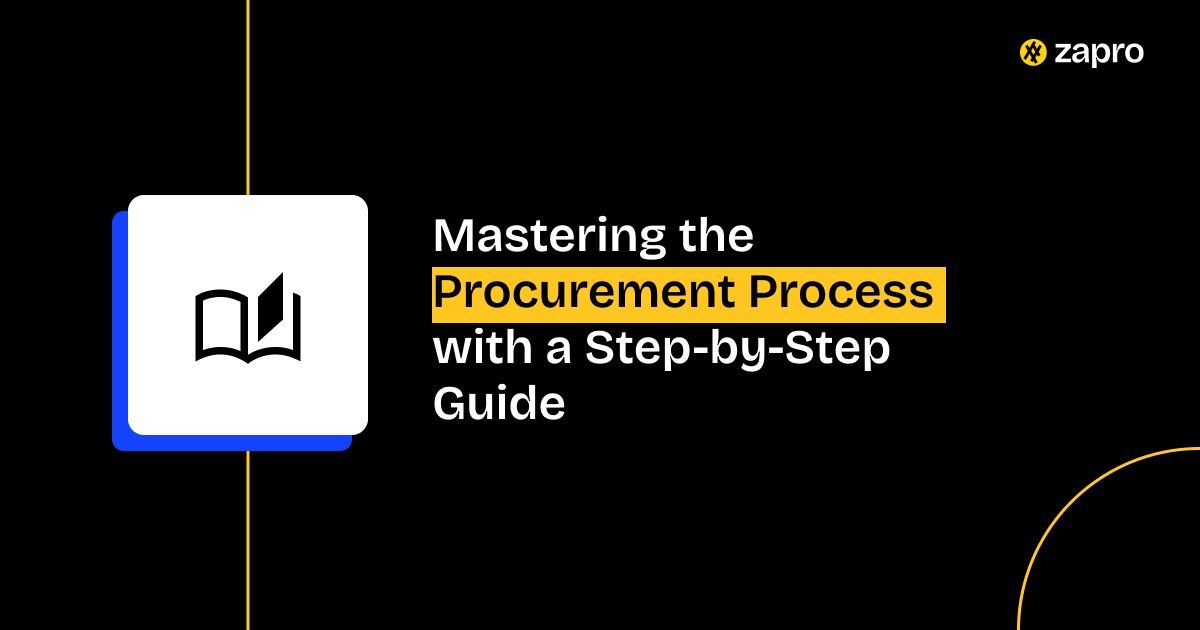
 Healthcare
Healthcare Financial Services
Financial Services Technology
Technology Venture Capitalist
Venture Capitalist Chief Procurement Officer
Chief Procurement Officer Chief Financial Officer
Chief Financial Officer